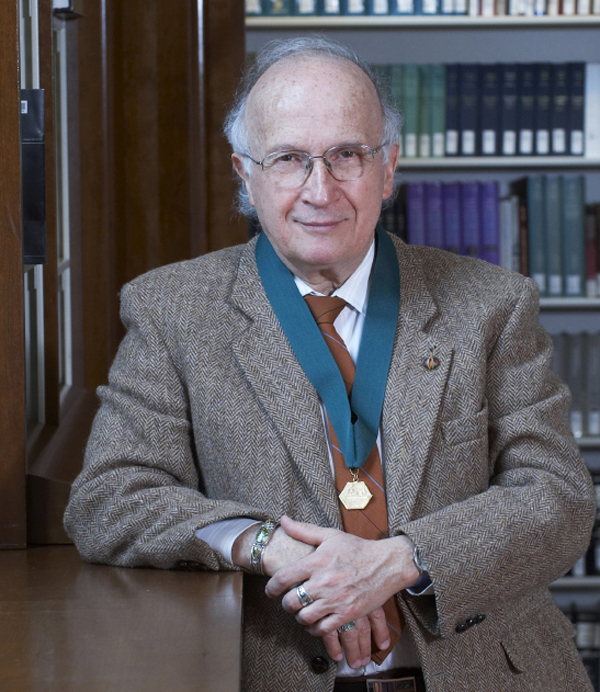1965
Woodward-Hoffman Rules
Robert Burns Woodward (1917–1979), Kenichi Fukui (1918–1998), Roald Hoffman (b. 1937)
As chemists learned more about stereochemistry (the spatial arrangement of atoms and groups in molecules), it became clear that some reactions behave in a very controlled fashion indeed. In general, the class of ring-breaking and ring-forming reactions whose mechanisms can be drawn simply by rearranging bonds (similar to the Diels-Alder reaction, with no free radicals and no new ions) tend to give products in set patterns. Particularly dramatic examples were found when the same reaction could be activated either by heat or by light. It turned out that the thermal reaction gave one stereochemical outcome, while the photochemical reaction always gave a different one, and very specifically.
Something important was at work there, clearly, and in 1965 American chemists Robert Burns Woodward and Roald Hoffman explained it all in terms of molecular orbitals. They set forth a few rules of thumb: if the number of electrons moving around is divisible by four, the reaction will go in one direction, if the number of electrons is a multiple of four plus two more, it will go in another. (All these reactions work by moving bonds around, two electrons at a time, so these patterns may also remind you of the electron-counting rules for aromaticity.) The rules also predicted which sorts of reactions would be favored, which explained why thermally accelerated reactions tended to be like the Diels-Alder and form six-membered rings, while photochemistry tended to produce four-membered rings. A huge variety of reactions fit into these schemes, and the Woodward-Hoffman rules applied to them all, making sense of a long list of experimental results. Reactions of this kind that have not even been tried yet can have their products predicted.
Hoffman and Japanese chemist Kenichi Fukui (who’d worked out a very similar scheme from a different molecular orbital approach) got the Nobel for this in 1981, and Woodward would surely have shared it (as his second Nobel Prize in Chemistry) if he had lived long enough. This work had a significant impact on organic chemistry, making every synthetic chemist pay attention to molecular orbital theory even if they’d felt safe ignoring it before.
SEE ALSO Photochemistry (1834), Diels-Alder Reaction (1928), Dipolar Cycloadditions (1963), B12 Synthesis (1973)

Roald Hoffman, after being awarded the American Institute of Chemists’ gold medal in 2006. (For a picture of his partner, Robert Burns Woodward, see B12 Synthesis.)